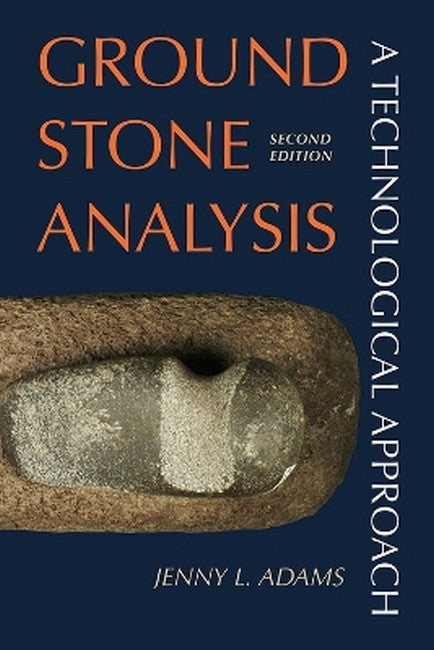Jenny L. Adams is a research archaeologist with Desert Archaeology, Inc., Tucson, Arizona.
Request Academic Copy
Please copy the ISBN for submitting review copy form
Description
List of Figures List of Tables Acknowledgments Part 1. A Foundation for Research 1. The Groundwork Determining Function Laying a Foundation for Analysis Classifying Ground Stone 2. Grinding Technology and Technological Analysis Design and Manufacture Use Wear Use-Wear Analysis Kinematics Disuse, or the Afterlife Data Collection Answering Research Questions Analysis Strategy 3. Resources for Modeling Tool Use and Technological Behavior Photographs Ethnography Experimental Replication Designing Experimental Research Part 2. Artifact Descriptions4. Abrading, Smoothing, and Polishing Tools Abraders and Smoothers Polishers Hide-Processing Stones 5. Grinding and Pulverizing Tools Manos and Metates Mortars Pitted and Cupped Stones Pestles Handstones Netherstones Grinding Slabs Lapstones Palettes 6. Percussion Tools Hammerstones Pecking Stones Choppers Chisels Crushers and Fergoliths Pottery Anvils Lithic Anvils 7. Hafted Percussion Tools Axes Mauls Picks Adzes Mattocks Hoes Tchamahias 8. Spinning Tools Fire-Drill Hearths Spindle Bases Whorls 9. Perforating, Cutting, and Scraping Tools Awls Reamers Tabular Tools Saws and Files Planes 10. Paraphernalia Atlatl Parts Balls Bell Stones Cruciforms Cylinders and Medicine Stones Plummets and Weights Disks Lightning Stones Pipes and Tubes Shaped Stones Pigments Personal Ornaments Figurines Ecofacts 11. Containers and Container Closures Bowls and Censers Trays Closures 12. Structural Stones Loomblocks Cooking Stones Trivets Fire-Cracked RockAppendix A. General Artifact Form Appendix B. Handstone Form Appendix C. Netherstone Form Appendix D. Hafted Tool Form Appendix E. Grooved Artifact Form Appendix F. Perforated Artifact Form Glossary References Cited Index
"A highly readable and well-illustrated manual that offers a structured, yet flexible, method for analyzing and classifying ground stone artifacts from any archaeological context. It is hard to imagine how [Adams's] approach could be improved upon, and I anticipate this book will serve as a bible for ground stone analysis specialists for the forseeable future."--Journal of Anthropological Research Praise for the first edition: "Adams is to be commended for having produced a well-organized and thoroughly documented manual based on her own quarter-century of hard work and thoughtful deliberation. The book is worth careful study by anyone faced with description and interpretation of assemblages of stone artifacts whose forms were created or altered by grinding, abrading, or polishing."--Lithic Technology

